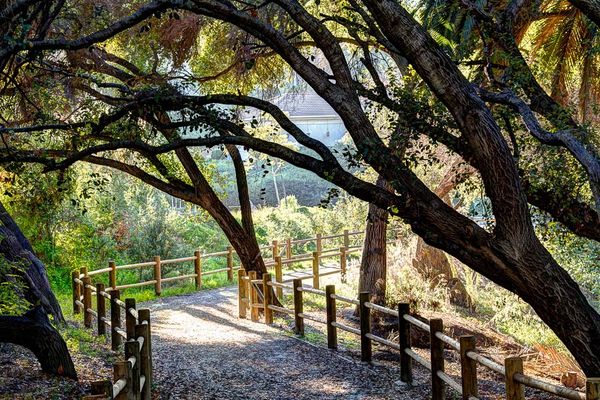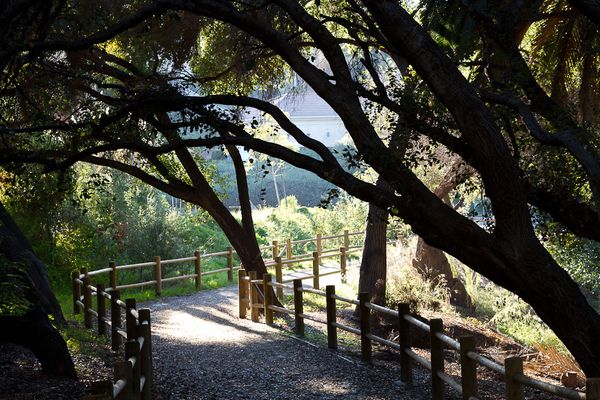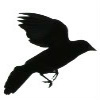Multiple Exposure vs HDR
Dec 15, 2011 14:05:59 #
I use a Nikon camera which will make multiple exposures. Given I go through the same process, (changing my settings after each snap) whether I am making a multiple exposure image or bracketed images, why should I do HRD in PP rather than just making and using the multiple exposure?
My camera will make the multiple exposure in either raw or JPEJ.
My camera will make the multiple exposure in either raw or JPEJ.
Dec 15, 2011 18:30:13 #
I tried that with using multiple exposures on my Nikon D300S in RAW and it didn't work. So I'm still doing bracketing for my HDR images. Arnold
Dec 15, 2011 18:42:11 #
Multiple exposures (bracketed) allow you to choose the image you like best. HDR combines all the images and chooses the most correctly exposed area of each image creating a single image with detail in the brightest areas and the darkest areas. They are both useful techniques but quite different results.
Dec 15, 2011 22:12:11 #
Jim I not sure we're on the page - the multiple exposure I am talking about is where the camera merges up 10 exposures into one image in the camera - if I take 10 snaps I have one image.
Dec 15, 2011 22:33:03 #
Jim is talking about the camera taking 3 shots at different exposures.....-2,0,+2. I've really never seen what your Nikon can do !
Dec 15, 2011 23:26:21 #
Some digital cameras will allow you to take multiple exposures and combine them into one image. This is akin to multiple exposures in film days. If I take a shot of you on the left side of the viewfinder and in the next you move to the right side (camera on tripod, not moved), I will have two ghost images of you (usually exposure compensation is automatic). If this is the kind of multiple exposure you're getting it's not HDR. These images (even if manually bracketed) are just stacked on top of one another. HDR does require processing which some cameras now will do internally. Is this getting things more together?
Dec 15, 2011 23:50:07 #
gonate
Loc: sacramento,calif
I used to do that with film ( shoot 24 photos ) rewind the film and put it back in and shoot the same roll of film again results were a double exposure and could do that as many times as you I wanted to .
gonate
gonate
Dec 16, 2011 00:16:25 #
My understanding of putting together an HDR photo is combining at least three photos of the same scene..one normal, one under-exposed and one over-exposed. Tripod required.
Dec 16, 2011 03:35:00 #
I have a Nikon that has a mode they call Best Shot Selector (BSS). You take multiple exposures and it will choose the one it considers to be the "best", a task I would prefer to do myself.
I wonder if that's what is going on here? Not related to HDR at all.
I wonder if that's what is going on here? Not related to HDR at all.
Dec 16, 2011 05:06:06 #
CeriThurston
Loc: London, UK
Elle wrote:
My understanding of putting together an HDR photo is combining at least three photos of the same scene..one normal, one under-exposed and one over-exposed. Tripod required.
Just a small matter of interest, I have take a number of hand-held HDR exposures. All it requires is holding your breath and a very firm hold. But...., a tripod does help and if not, a very firm "something" to rest against.
Dec 16, 2011 06:04:31 #
BboH wrote:
. . . why should I do HRD in PP rather than just making and using the multiple exposure?
My camera will make the multiple exposure in either raw or JPEJ.
My camera will make the multiple exposure in either raw or JPEJ.
I'm not sure what you mean by "making and using". But, if you're talking about using the multiple exposures for something other than HDR, then the options are few. What other reason to have multiple exposures than to combine them for an overall aesthetically pleasing or creatively compelling photo?
Of course there is the Exposure Fusion versus HDR, which you might care to read this excerpt from the Photomatix site: http://www.hdrsoft.com/support/faq_photomatix.html#differences
Dec 16, 2011 08:46:05 #
JohnnyRottenNJ
Loc: Northern New Jersey
Depending on the model Nikon, you can set the camera for bracketing your photos. The D300 will allow you to take (I think) up to nine photos, so you can set your EV (Exposure Value) to change in 1/2 or 1/4 stop increments and take up to nine pics. That would give you 4 shots underexposed in whatever increment you set it at, one shot properly exposed and four shots increasingly overexposed. There is a software program called PhotoMatix Pro that will then take all of those shots and combine them into one HDR photograph. If you do it, be prepared for the computer to run for some time while the program compiles everything.
PS: Remember to turn OFF the bracketing feature when you are done. Otherwise you will be getting some very dark and then some very light photos. I did that, and it took me a little time to figure out why. DUH!!!
PS: Remember to turn OFF the bracketing feature when you are done. Otherwise you will be getting some very dark and then some very light photos. I did that, and it took me a little time to figure out why. DUH!!!
Dec 16, 2011 09:09:41 #
Elle wrote:
My understanding of putting together an HDR photo is combining at least three photos of the same scene..one normal, one under-exposed and one over-exposed. Tripod required.
I agree with a minor exception. With my Nikon D200 set to "auto bracketing" and "continuous shooting high speed" I can get away with a 5 exposure shot hand held. HDR software will frequently align exposures that are not tripod perfect.
Whoops, just noticed CeriThurston made a similar comment. Sorry
Dec 16, 2011 09:31:16 #
Remember the question:
BboH wrote:
why should I do HRD (HDR) in PP rather than just making and using the multiple exposure?
Dec 16, 2011 09:33:13 #
Bboh, HDR stands for high dynamic range. My canon 7D will bracket automatically letting you set up plus-normal-minus shutter speeds or apertures. I use high speed capability of the canon's 7 frames/sec. This can be in 1/2,1, or 2 exposure increments or more. I use a software called Photomatix to marry the images. It gives the full range of light your eye is capable of. In other words the 10 zones of light Ansel Adams talked about from paper white to black. Color film and digital processors are only capable of capturing about 6 zones of light before they black out or white out. . One of the draw backs is any movement in the picture. Photomatix does address this with software but it still is not perfect. You will gets some ghosting if there is movement. The faster you can take the three pictures the better the quality. Breezy days and trees are really challenging.
here is hdr full detail in shadow and light

here's normal no detail in shadow or highlight

If you want to reply, then register here. Registration is free and your account is created instantly, so you can post right away.





